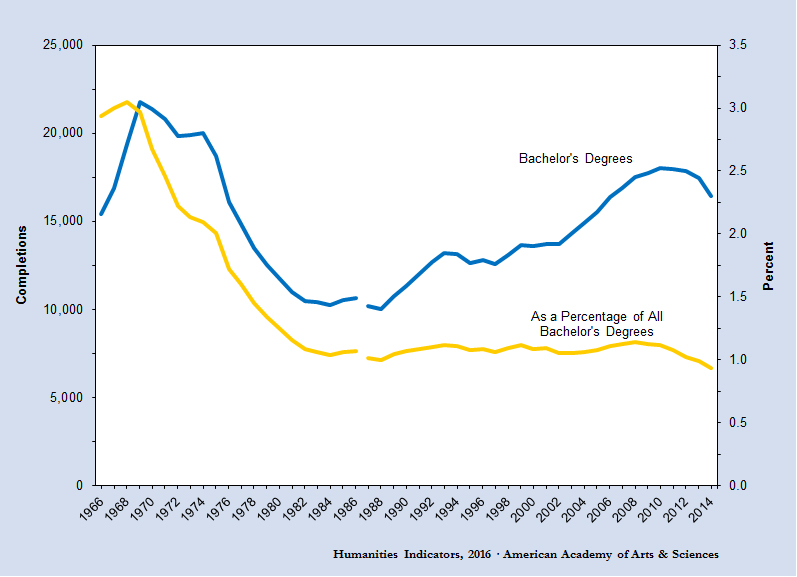II-46a: Bachelor’s Degree Completions in Languages and Literatures Other than English (Absolute Number and as a Percentage of all Bachelor’s Degrees), 1966–2014*

* The gaps in the trend lines for 1987 indicate a shift from the National Science Foundation’s disciplinary classification system to the National Center for Education Statistics’ Classification of Instructional Programs. Please see the Note on the Data Used to Calculate the Number of Degree Completions in English Language and Literature and in Languages and Literatures Other than English for an explanation of the differences between the two systems that are most pertinent to this indicator. Degree counts exclude second majors.
Source: U.S. Department of Education, Institute of Education Sciences, National Center for Education Statistics, Integrated Postsecondary Data System; accessed via the National Science Foundation’s online integrated science and engineering resources data system, WebCASPAR.
See the Note on Data Used to Calculate Discipline-Specific Degree Counts and Shares and the Note on the Data Used to Calculate the Number of Degree Completions in English Language and Literature and in Languages and Literatures Other than English. Data on the number of students completing minors are not gathered as part of the data collection program from which these degree completion counts are drawn, but such information was compiled for selected humanities disciplines as part of the American Academy of Arts and Sciences–sponsored Humanities Departmental Survey.

